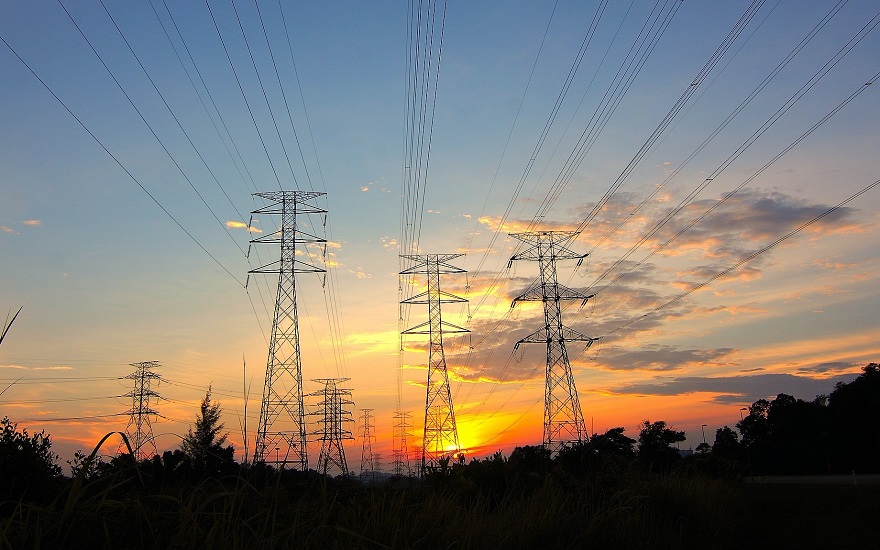The Northeastern Blackout of August 2003 left 55 million people across eight states and parts of Canada without electricity.
At the time, the incident was the second-largest power cut in history, only topped by a 1999 outage in Brazil. As a comparison, its impact was far more widespread than the Northeastern Blackout of 1965.
“We are a superpower with a third-world electrical grid”. That was the immediate response of New Mexico Governor Bill Richardson, who had been Energy Secretary under President Clinton.
Such a damning summary didn’t come as too much of a surprise when the reasons for the blackout started to emerge…
The events of August 2003 saw human error, software glitches and simple system flaws combine to transform what should have been a manageable local blackout into the collapse of the entire northeast regional grid.
It led to 21 power plants shutting down in just three minutes, resulting in the largest power failure ever seen in North America.
Millions of people in New York, Cleveland, Detroit, Toronto, Ottawa and more left without electricity for anywhere from a few hours to several days. At least 11 deaths. An estimated cost of $ 6 billion.
A single tree coming into contact with a single power line kickstarted a chain of 800 events that contributed to such a catastrophic grid failure…
What Really Happened?
Shortly after 2 pm on Thursday 14 August, a 345 kV high-voltage transmission line in northern Ohio sagged and made contact with branches on some overgrown trees, tripping out.
This should have triggered an alarm in the control room of Ohio-based utility company FirstEnergy Corporation. But the alert never happened. A software bug stalled FirstEnergy’s alarm system for more than an hour, leaving system operators in the dark as events unfolded.
Operators weren’t aware they needed to redistribute the load. So the load rerouted itself and caused increased stress across other transmission lines.
Over the next hour and a half, several other overworked lines sagged into trees and faulted too. System controllers in Ohio, busy trying to come to terms with the multiple failures, failed to inform their counterparts in nearby states.
Just after 4 pm, a sustained power surge towards Cleveland, Ohio sees several more transmission lines trip out across Michigan and Ohio.
With “demand” dropping as a result, numerous power plants go offline, creating a huge power deficit. In just a few seconds, a 3,500 MW power surge overloads power plants on the east coast, whose automatic shutdown mechanisms kick-in as a protective measure.
At 4:10 pm, within a matter of seconds:
- Cleveland separates from the Pennsylvania grid
- International connections between the USA and Canada start to fail
- New York separates from the New England grid
- Ontario separates from the western New York grid
- Northwestern Ontario separates from the east
The cascade effect was well and truly underway. By 4:13 pm, 508 generating units at 265 power plants are offline. Reports show 85% did so after the grid separations took place, in the main due to automatic protective controls.
Power outages spread during the next half hour: Maryland (Baltimore), Michigan (Detroit), Ohio (Cleveland, Akron, Toledo), Ontario (London, Windsor), New Jersey (Newark), and New York (New York City, Westchester, Orange and Rockland counties, Rochester, Syracuse, Binghamton, Albany).
Other areas followed, including Vermont, Connecticut and Ottawa.

Before the incident, the New York Independent Transmission System Operator (NYISO) system was carrying a load of 28,700 MW. This dropped to 5,716 MW at the height of the outage, a loss of 80%.
Not all parts of the affected regions were left in the dark, with roughly 200,000 people still having power. These included the Niagara Peninsula of Ontario, eastern Ontario, the Buffalo, NY area (excluding Erie county).
This unaffected area was protected by transmission circuit devices at the Sir Adam Beck Hydroelectric Generating Stations in Niagara Falls, a switching station of the hydroelectric station in Cornwall, Ontario, and central New York state.
In a quirk of fate, the Sir Adam Beck Hydroelectric Generating Stations was the starting point of the Northeastern Blackout of 1965.
The Official Verdict
In February 2004, the joint US-Canada Power System Outage Task Force pinned the blame for the blackout on a combination of human error and equipment failure.
Led by the then US Energy Secretary Spencer Abraham and Canada’s Natural Resource Minister Herb Dhaliwal, the taskforce’s final report highlighted four key shortcomings:
- FirstEnergy (FE) “failed to asses and understand the inadequacies of FE’s system, particularly with respect to voltage instability and the vulnerability of the Cleveland-Akron area. FE did not operate its system with appropriate voltage criteria”.
- FirstEnergy “did not recognise or understand the deteriorating condition of its system”.
- FirstEnergy “failed to adequately manage tree growth in its transmission rights-of-way”.
- “The failure of the interconnected grid’s reliability organisations to provide effective real-time diagnostic support”.
It also criticised FirstEnergy’s “little reactive margin for error”, “inadequate system planning” and staff badly trained to deal with emergencies.
The investigation highlighted 46 recommendations to reduce the risk of similar events taking place. The top proposal was making reliability standards in the electricity industry mandatory and legally enforceable.
Before 2003, industry standards set by the North American Electricity Reliability Council (NERC) were voluntary. The 2005 Energy Policy Act expanded the role of the Federal Regulatory Commission (FERC) to oversee the NERC and enforce a swathe of new reliability standards.
Dozens of new standards were implemented in the years following the blackout, mainly focused on “trees, training and tools” according to Joseph McClelland, Director of FERC’s Office of Electrical Reliability.
Examples include standard FAC-003 (mandatory to keep trees clear of transmission lines), standard TOP-002-1 (grid operating systems must be able to survive a power line fault or any other single failure, no matter how severe), and standard PER-003 (operating personnel must have the minimum training to recognise and deal with critical grid events).
FERC can impose fines totalling millions of dollars a day on electricity companies for any breach of standards.
FirstEnergy responded to the taskforce’s criticisms by building a new $45 million transmission control centre in Akron, Ohio. Equipped with advanced computerised systems and huge video screens, the facility gives operators a system-wide overview of what’s going on in real-time.
In addition, the company installed new load shedding equipment with the capacity to quickly cut 1,300 MW from transmission lines when necessary.




